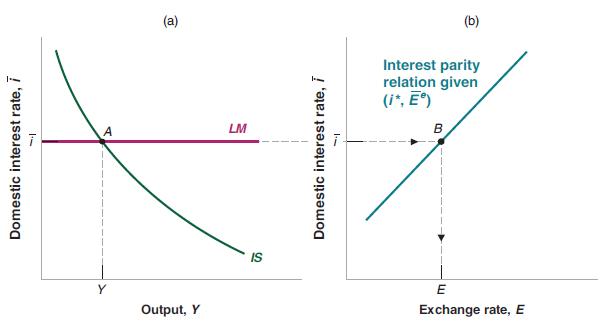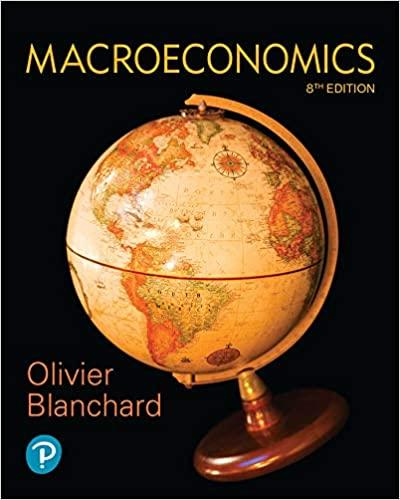Policy choices when the real exchange rate is too high and the nominal exchange rate is fixed
Question:
Policy choices when the real exchange rate is "too high" and the nominal exchange rate is fixed An overvalued real exchange rate is a rate such that domestic goods are too expensive relative to foreign goods, net exports are too small, and by implication the demand for domestic goods is too low. This leads to difficult policy choices for the government and central bank. The equations (* denotes a value for the foreign country) that describe the economy are:
The IS curve:

The Phillips curves for the domestic and the foreign economy:

In the text and in this question, we make two critical assumptions. These are explored in parts \(a\) and \(b\). Then we move to the analysis of the policy options when a country is experiencing an overvalued exchange rate.
a. We assume that the foreign economy is always in mediumrun equilibrium. What are the implications of that assumption for foreign output and foreign inflation?
b. We assume that the domestic and foreign economies share the same anchored value for the level of expected inflation denoted so that \(\bar{\pi}=\bar{\pi}^{*}\). What is the implication of that assumption once both the domestic and foreign economies are both in medium-run equilibrium?
c. Draw the IS-LM-UIP diagram along the lines of Figure 19-2 for the case where the domestic country has an overvalued nominal exchange rate. What is the key feature of that diagram? Under fixed exchange rates without a devaluation, how does the economy return to its medium-run equilibrium?
d. Draw the IS-LM-UIP diagram for the case where the domestic country has an overvalued nominal exchange rate. Show how the economy can return to medium-run equilibrium when a devaluation is a policy choice.
e. Recall that the assumption has been made that interest rate parity holds, so \(i=i^{*}\) at all times. Compare the returns on the domestic bond and the returns on the foreign bond in the period of the devaluation. Will bond holders continue to believe there is a completely fixed nominal exchange rate? If bond holders believe that another devaluation is possible, what are the consequences for domestic interest rates?
Data from Figure 19-2

Step by Step Answer:





